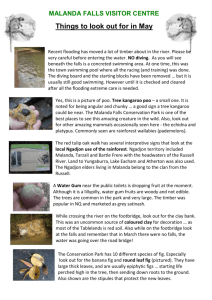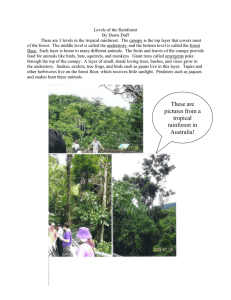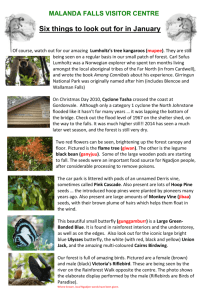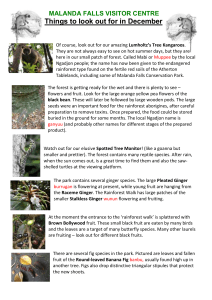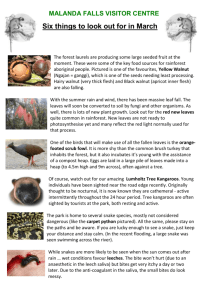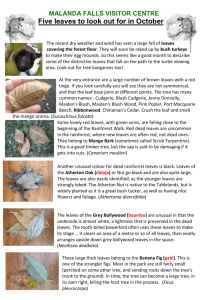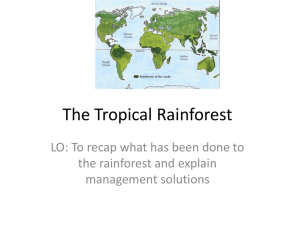MALANDA FALLS VISITOR CENTRE
advertisement
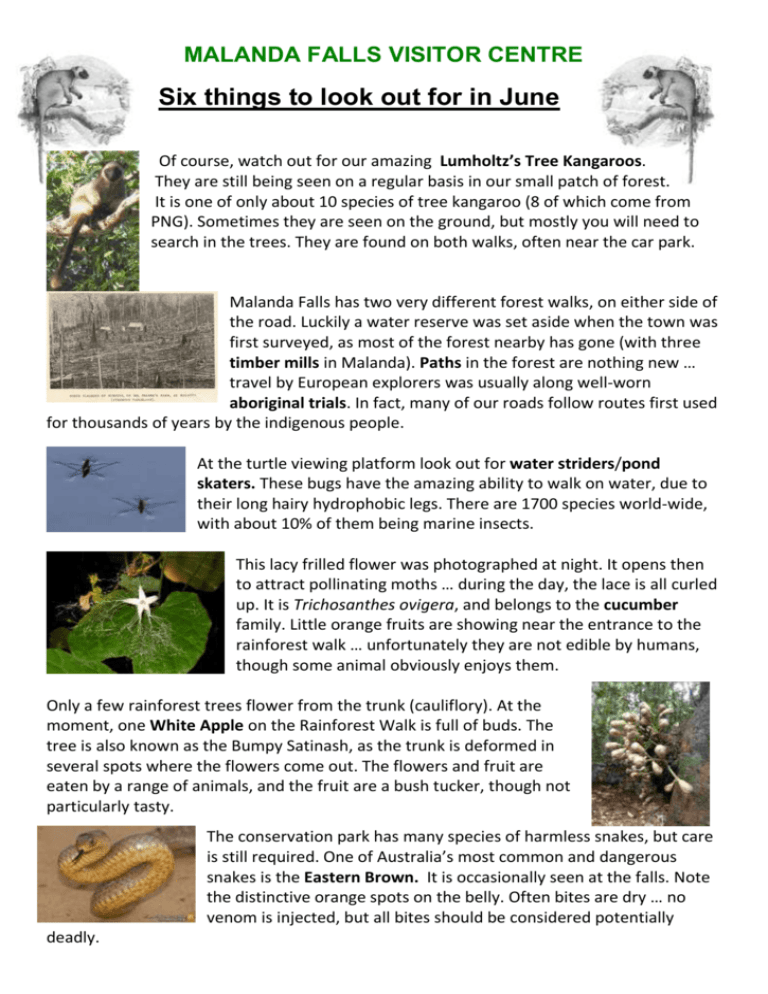
MALANDA FALLS VISITOR CENTRE Six things to look out for in June Of course, watch out for our amazing Lumholtz’s Tree Kangaroos. They are still being seen on a regular basis in our small patch of forest. It is one of only about 10 species of tree kangaroo (8 of which come from PNG). Sometimes they are seen on the ground, but mostly you will need to search in the trees. They are found on both walks, often near the car park. Malanda Falls has two very different forest walks, on either side of the road. Luckily a water reserve was set aside when the town was first surveyed, as most of the forest nearby has gone (with three timber mills in Malanda). Paths in the forest are nothing new … travel by European explorers was usually along well-worn aboriginal trials. In fact, many of our roads follow routes first used for thousands of years by the indigenous people. At the turtle viewing platform look out for water striders/pond skaters. These bugs have the amazing ability to walk on water, due to their long hairy hydrophobic legs. There are 1700 species world-wide, with about 10% of them being marine insects. This lacy frilled flower was photographed at night. It opens then to attract pollinating moths … during the day, the lace is all curled up. It is Trichosanthes ovigera, and belongs to the cucumber family. Little orange fruits are showing near the entrance to the rainforest walk … unfortunately they are not edible by humans, though some animal obviously enjoys them. Only a few rainforest trees flower from the trunk (cauliflory). At the moment, one White Apple on the Rainforest Walk is full of buds. The tree is also known as the Bumpy Satinash, as the trunk is deformed in several spots where the flowers come out. The flowers and fruit are eaten by a range of animals, and the fruit are a bush tucker, though not particularly tasty. The conservation park has many species of harmless snakes, but care is still required. One of Australia’s most common and dangerous snakes is the Eastern Brown. It is occasionally seen at the falls. Note the distinctive orange spots on the belly. Often bites are dry … no venom is injected, but all bites should be considered potentially deadly.
